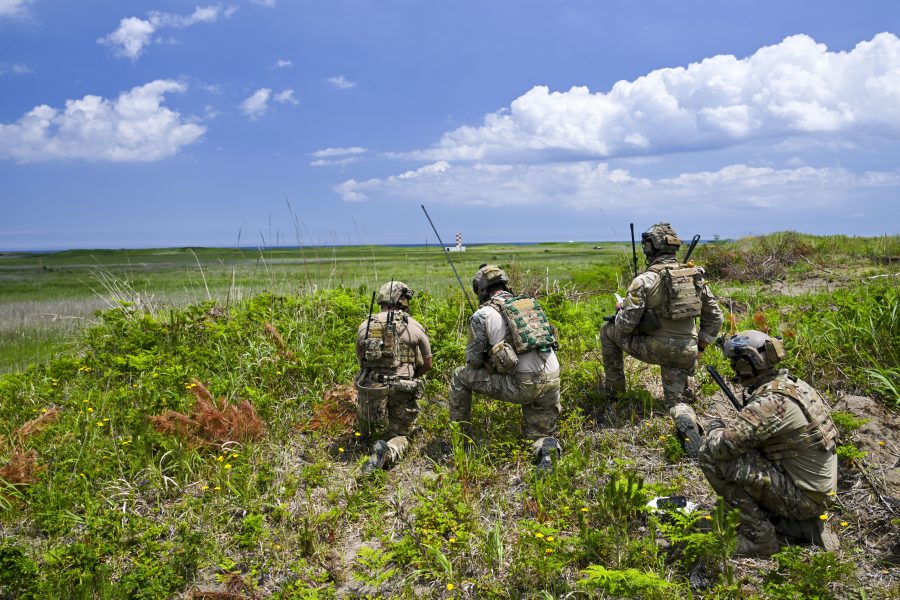The lack of training ranges and airspace in Japan are making it difficult for U.S. aircrews to maintain readiness during the pandemic, the head of U.S. forces in Japan said.
U.S. and Japanese aircraft and personnel need to leave the country for high-end training, often traveling to major exercise such as a Red Flag in the United States, said Lt. Gen. Kevin B. Schneider, commander of 5th Air Force and U.S. Forces Japan. Although there are ranges inside Japan, such as the Draughon Range near Misawa Air Base or a smaller space at Camp Fuji, those locations face encroachment issues with local populations and local officials are hesitant to allow events even if they use inert training munitions.
“We don’t have the training ranges, we don’t have the airspace, and we don’t have the freedom of maneuver flexibility that I would like for forces to maintain their highest level of readiness,” Schneider said during a virtual Air Force Association “Airmen in the Fight” event. “So we work, fight, challenge every day to figure out ways that we can improve the opportunity.”
The Defense Department has restricted travel for troops during the COVID-19 pandemic, and the cost of travel has increased, impacting Pacific exercise planners trying to figure out how to safely hold the annual Cope North exercise and decide whether the event should be pared down, he said.
U.S. and Japanese military leaders meet regularly to discuss ways to creatively improve training opportunities locally.
Japan has shown a “genuine appetite that they want to do more with us,” Schneider said. “We need to find ways to do more with the opportunities that we have here in Japan. I believe it chips away at our deterrence value if we’re having to take the show on the road and go somewhere else to train.”
Despite initial “hand wringing and anxiety” about the end of the continuous bomber presence at Andersen Air Force Base, Guam, training opportunities with bombers have increased under the new dynamic force employment, which includes both shorter-term bomber task force deployments and long-distance flights to the Pacific that take off and land at home bases in the continental U.S., Schneider said. While some of the first missions were more of a photo opportunity, the training has since become more intense.
Japanese military leaders want to be able to “get more tactical employment, more training out of these bomber sorties, and I fully embrace that,” Schneider said. “I want to look for ways that we can build our capabilities, whether we’re using the bombers as training aids for our own capability or we’re looking to employ with them. But I think there’s a lot of things we’re going to continue to do and evolve going forward.”
High-end training is becoming even more important as Japan fields F-35s. As of now, the Japan Air Self-Defense Force has more than a dozen of the fifth-generation aircraft and is planning to stand up its second squadron later this month, with plans to buy 147 of the aircraft. This will make Japan the second-largest operator of F-35s, and the U.S. needs to share as much of its operational and training knowledge as possible so Japan can quickly be effective.
The U.S. Marine Corps also operates F-35s in Japan at Marine Corps Air Station Iwakuni. The Air Force is undergoing force structure planning as it looks to phase out its aging F-15Cs at Kadena Air Base, with the possibility of basing F-35As or new F-15EXs there. Schneider said he did not want to get ahead of these discussions, but it was his opinion that it would be beneficial to increase the fifth-generation presence in Japan with F-35As.

